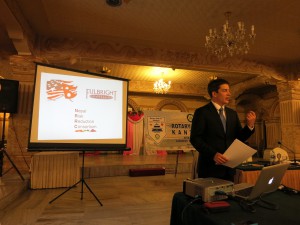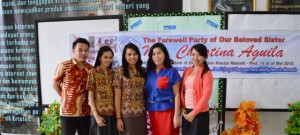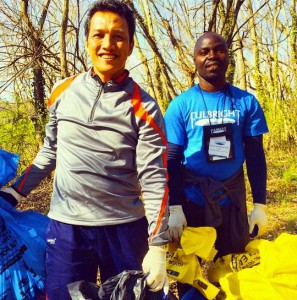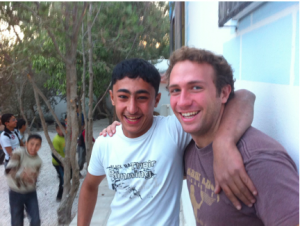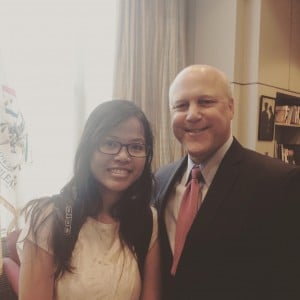
Fulbright Foreign Student from Cambodia Pichleap Sok meeting New Orleans Mayor Mitch Landrieu, after the MTP visit to the New Orleans Mission, to discuss community innovation and how New Orleans has rebuilt itself after Hurricane Katrina.
The Fulbright-Millennial Trains Project has been one of the best traveling experiences I have ever had. It’s not just about sharing your ideas, experiences and time with 24 millennial participants, but also about discovering different parts of the United States. When the train stops in each city, we have about five hours to visit. Exploring a city in just five hours is definitely a challenge, but the idea of getting to know each city from the perspective of the other 24 MTP participants has been and is – absolutely amazing. Each and every millennial on the train has an individual project they are working on, and when the train stops in a different city, we go to different places to do our projects. When we return to the train and share our experiences, it is great to compare notes on each city’s unique culture, accent, identity, people and food.

